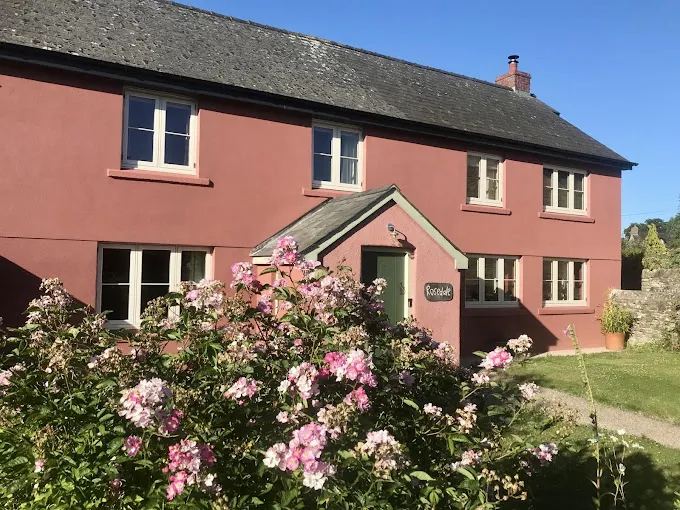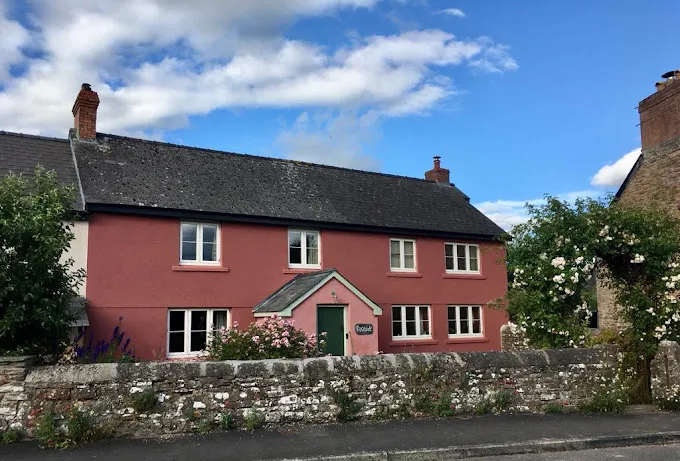Ultimate External Wall Insulation Wales Guide & Expert Tips
When considering external wall insulation Wales property owners face numerous options and decisions that can significantly impact their home’s energy efficiency and comfort. External wall insulation represents one of the most effective methods for improving thermal performance in older properties, particularly those with solid walls that lack cavity insulation. This comprehensive guide examines the various aspects of external wall insulation systems, helping Welsh property owners make informed decisions about their insulation needs.
Understanding the fundamentals of external wall insulation becomes crucial when evaluating options for your Welsh property. The process involves applying insulation materials directly to the external surface of walls, followed by protective and decorative render systems. This approach addresses thermal bridging issues common in older construction while simultaneously refreshing the property’s appearance.
Modern external wall insulation systems offer substantial advantages over internal insulation alternatives. The external approach preserves internal floor space, minimizes disruption to occupants, and provides superior thermal performance by creating a continuous insulation layer around the building envelope. Welsh properties particularly benefit from these systems due to the challenging weather conditions and prevalence of solid wall construction in the region.
Historical Context and Modern Developments
The development of external wall insulation Wales has evolved significantly since the early adoption of these systems in the housing sector. Originally introduced as a solution for improving energy efficiency in social housing, external wall insulation has become increasingly popular among private homeowners seeking to reduce heating costs and improve comfort levels.
Call Us
Welsh housing stock presents unique challenges that make external wall insulation particularly relevant. Many properties throughout Wales were constructed before modern building regulations required cavity wall insulation, leaving them with solid walls that conduct heat readily. The coastal climate, with its combination of wind-driven rain and salt air, demands insulation systems that can withstand these harsh conditions while maintaining thermal performance.
Recent developments in insulation materials and application techniques have made external wall insulation more accessible and cost-effective for Welsh property owners. Modern systems incorporate advanced materials such as expanded polystyrene, mineral wool, and polyurethane foam, each offering specific advantages for different applications and budgets. The integration of these materials with high-performance render systems creates durable, weather-resistant facades that protect properties for decades.
Types of External Wall Insulation Systems
Several distinct types of external wall insulation systems are available for Welsh properties, each designed to address specific requirements and building characteristics. Expanded polystyrene systems represent the most common choice, offering excellent thermal performance at competitive costs. These systems use lightweight insulation boards mechanically fixed to existing walls, creating an effective thermal barrier that reduces heat loss significantly.
Mineral wool systems provide superior fire resistance and acoustic properties, making them particularly suitable for commercial buildings and properties where fire safety requirements are paramount. The breathable nature of mineral wool allows moisture to escape from the wall structure, preventing condensation issues that can affect building integrity. These systems perform exceptionally well in Welsh coastal areas where moisture management becomes critical.
Polyurethane foam systems offer the highest thermal performance per unit thickness, making them ideal for properties where space constraints limit insulation thickness. The closed-cell structure of polyurethane provides excellent moisture resistance while delivering superior thermal efficiency. These systems require careful installation to ensure proper adhesion and long-term performance in Welsh weather conditions.
Hybrid systems combine multiple insulation materials to optimize performance characteristics. These systems might incorporate mineral wool in areas requiring fire resistance with polystyrene in other locations, creating customized solutions for complex building geometries. The flexibility of hybrid systems allows installers to address specific challenges presented by Welsh architecture while maintaining consistent thermal performance.
Benefits and Performance Characteristics
The advantages of external wall insulation Wales extend beyond simple energy savings, encompassing comfort, durability, and aesthetic improvements. Property owners typically experience substantial reductions in heating costs, with some solid wall properties achieving energy bill reductions of several hundred pounds annually. The improved thermal envelope reduces heat loss through walls, creating more stable internal temperatures and enhanced comfort levels.
Thermal bridging elimination represents a crucial benefit of external wall insulation systems. Traditional construction methods create thermal bridges through structural elements that conduct heat directly from internal to external environments. External insulation wraps around these elements, breaking thermal bridges and preventing cold spots that can cause condensation and mold growth. This becomes particularly important in Welsh properties where high humidity levels can exacerbate moisture problems.
The protective benefits of external wall insulation extend the lifespan of building structures by shielding them from weather damage. The insulation system creates a barrier against wind-driven rain, freeze-thaw cycles, and temperature fluctuations that can cause structural deterioration. Welsh properties benefit significantly from this protection, given the challenging coastal and mountainous weather conditions throughout the region.
Property value enhancement represents another significant advantage of external wall insulation systems. The improved energy efficiency contributes to better Energy Performance Certificate ratings, making properties more attractive to potential buyers. The refreshed external appearance achieved through new render systems can substantially improve kerb appeal, particularly important for older properties that may appear dated or weathered.
Installation Process and Considerations
The installation of external wall insulation Wales requires careful planning and execution to ensure optimal performance and longevity. The process begins with thorough assessment of the existing wall structure, identifying any repairs needed before insulation installation. This assessment becomes particularly important for Welsh properties, where exposure to harsh weather conditions may have caused structural issues that require attention.
Surface preparation represents a critical phase in the installation process. Existing render, paint, or coatings must be assessed for compatibility with the insulation system. Loose or damaged materials require removal to ensure proper adhesion of the new system. Welsh properties often require extensive preparation due to the effects of coastal weather on external surfaces.
The installation sequence typically involves mechanically fixing insulation boards to the existing wall surface, followed by application of base coat render reinforced with mesh. This creates a strong, weather-resistant substrate for the final decorative render coat. Each stage requires careful attention to detail, particularly around windows, doors, and other architectural features where thermal bridging must be prevented.
Quality control throughout the installation process ensures long-term performance of the external wall insulation system. Regular inspection of adhesion, joint sealing, and render application helps identify potential issues before they affect system performance. Welsh installations require particular attention to weather protection during application, as rain and high winds can compromise the curing process of render systems.
| System Type | Thermal Performance | Cost Range | Durability | Maintenance Requirements |
|---|---|---|---|---|
| Expanded Polystyrene | Good | Moderate | Excellent | Low |
| Mineral Wool | Excellent | Higher | Very Good | Minimal |
| Polyurethane Foam | Superior | Premium | Excellent | Very Low |
| Hybrid Systems | Customizable | Variable | Excellent | Low |
Coloured Rendering South Wales: External Wall Insulation Expertise
Coloured Rendering South Wales brings over twenty-five years of experience to external wall insulation Wales projects, combining traditional craftsmanship with modern insulation technologies. Our expertise encompasses the complete range of external wall insulation systems, from standard polystyrene applications to specialized solutions for challenging Welsh coastal environments. We understand the unique requirements of Welsh properties and specify appropriate systems for each location and building type.
Our approach to external wall insulation Wales projects begins with comprehensive property assessment, evaluating existing wall conditions, architectural features, and site-specific challenges. This detailed analysis ensures that we recommend the most suitable insulation system for your property, considering factors such as exposure to weather, building age, and thermal performance requirements. Our spray rendering expertise allows us to complete the decorative finish efficiently, minimizing project duration and disruption to occupants.
The integration of high-performance render systems with external wall insulation creates attractive, durable facades that protect Welsh properties for decades. Our experience with various render types, including silicone and acrylic systems, ensures that we can match the finish to your property’s requirements and aesthetic preferences. The combination of thermal improvement and visual enhancement makes external wall insulation an excellent investment for Welsh property owners seeking to improve comfort, reduce energy costs, and enhance property value.
We maintain strong relationships with leading insulation manufacturers, ensuring access to the latest products and technical support for complex installations. Our team stays current with building regulations and installation standards, providing confidence that your external wall insulation Wales project will meet all requirements for performance and compliance. Contact us at 07815 868070 to discuss your external wall insulation requirements and arrange a free consultation.
Future Trends and Technological Developments
The evolution of external wall insulation technology continues to address the changing needs of Welsh property owners, with new materials and application methods emerging regularly. Advanced insulation materials incorporating aerogel technology offer superior thermal performance in minimal thickness, addressing space constraints that limit traditional insulation applications. These materials show particular promise for historic properties where maintaining original architectural proportions becomes important.
Smart insulation systems that can adjust their thermal properties based on environmental conditions represent an emerging trend in external wall insulation Wales. These systems use phase-change materials that absorb and release heat as temperatures fluctuate, providing dynamic thermal regulation that improves comfort and energy efficiency. While still in development, these technologies may become viable options for Welsh properties in the coming years.
Integration with renewable energy systems creates opportunities for external wall insulation to contribute to comprehensive energy strategies. Solar thermal panels can be integrated with insulation systems to provide both thermal improvement and renewable energy generation. This approach maximizes the energy performance benefits of external wall insulation while supporting Welsh government initiatives for renewable energy adoption.
Improved render systems continue to enhance the durability and appearance of external wall insulation installations. Self-cleaning renders reduce maintenance requirements, while photocatalytic coatings can help improve air quality around properties. These developments make external wall insulation Wales projects more attractive to property owners seeking long-term, low-maintenance solutions for thermal improvement.
Conclusion
External wall insulation Wales represents a transformative approach to improving property thermal performance, comfort, and appearance. The combination of energy savings, enhanced comfort, and property value improvement makes these systems an attractive investment for Welsh property owners. Understanding the various system types, installation requirements, and performance characteristics enables informed decision-making about external wall insulation projects.
The challenging Welsh climate demands high-quality external wall insulation systems that can withstand wind-driven rain, coastal conditions, and temperature fluctuations while maintaining thermal performance. Professional installation by experienced contractors ensures that these systems deliver their promised benefits over their design lifespan. The integration of modern render systems with external wall insulation creates attractive, durable facades that protect and enhance Welsh properties.
How will external wall insulation Wales transform your property’s energy performance and comfort levels? What specific challenges does your Welsh property face that external wall insulation could address? Could the combination of thermal improvement and aesthetic enhancement make external wall insulation the ideal solution for your property renovation needs? Consider contacting our experienced team to explore how external wall insulation can benefit your Welsh property and arrange a comprehensive consultation to assess your specific requirements.


